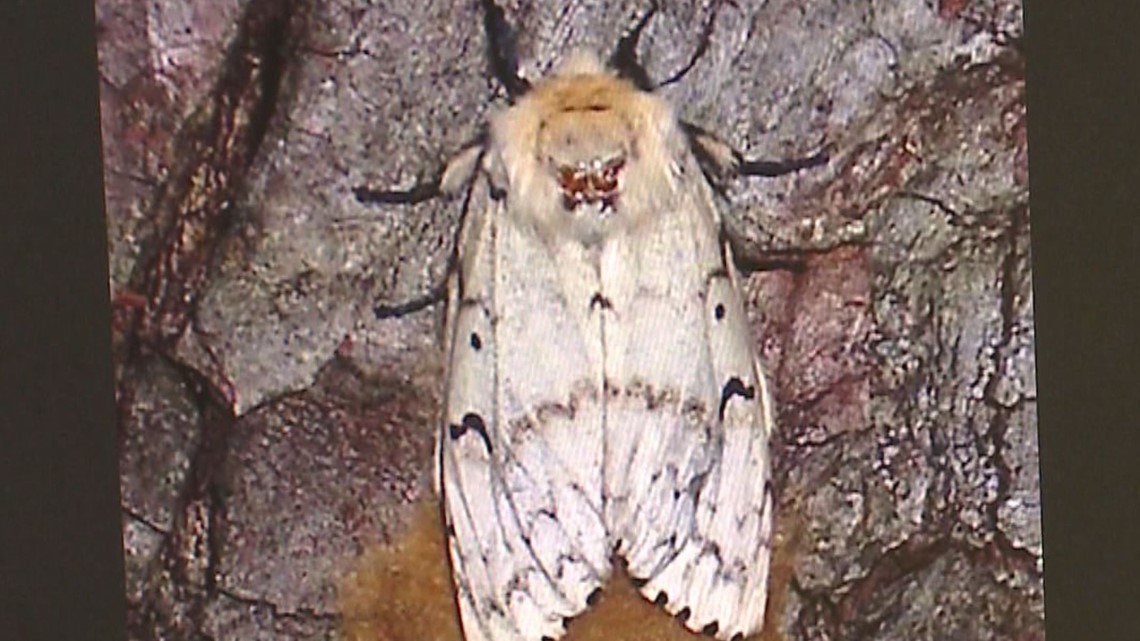MINNEAPOLIS — Cold weather may be the biggest complaint people have about living here in Minnesota.
Number two would have to be the mosquitoes and other annoying bugs that seem to pop up the second the snow starts melting.
Which got us thinking, how are they handling the cold this week?
Can we assume they're getting hit just as hard as we are?
We decided to check on four of the state's most notorious insects to see if they’re surviving this cold.
First bug on our list is the dreaded Emerald Ash Borer Beetle.
RELATED: Xcel expands urgent natural gas conservation request to all MN customers
"It's a tough day to be an Emerald Ash Borer let me tell you that," Rob Venette says.
Venette is a research biologist with the U.S. Forest Service and is one of the state’s foremost experts on invasive species.
"When the weather gets to around -20 degrees, that's where we see about half the Emerald Ash Borer beetles begin to die,” Venette says.
“When it gets down to around -30 degrees, that's when we can expect up to 90 percent mortality of these insects."
So, a lot of the beetles are dying as we speak.
Venette says that's because the beetles aren’t native to Minnesota, so they're not used to the cold weather here.
Plus, they spend their winter in the bark of ash trees, where the cold can easily get to them.
“If you’re worried about your ash tree this is a bit of good news,” Venette says.
Gypsy Moths are also having a tough time in the cold.
Venette says they snack on native trees, same as the beetles do, but instead of ash trees the moths typically like aspen and oak.
“The cold is not a silver bullet, though. Within a year or two these species will be back to where they are now. It’s no reason to give up the fight,” Venette says.


But what about the plague of people's gardens, the Japanese Beetle?
"They're pretty well insulated,” Venette says.
Unfortunately for gardeners, Japanese Beetles spend their winters underground where they can survive temps as low as -15 degrees.
Above ground we’ve seen it much colder than that this week, but under the snow it’s just warm enough to keep them alive.
“It’s just enough snow to keep them nice and insulated."
The same goes for Lyme’s Disease-carrying ticks.
"Ticks again are going to take advantage of that leaf and soil litter,” Venette says.
“They're going to hang out in that environment and be just fine."
Which brings us to the most feared bug of them all, the scourge of Minnesota, the mosquito.
RELATED: What to do if your car won't start in the cold
"Mosquitoes have a wide range of different habitats that keep them alive," Venette says.
Naturally, the worst one of them all, is also the best survivor.
Venette says mosquitoes lay their eggs all sorts of places where they can survive even the coldest Minnesota winter.
"That really does buffer them from a lot of the severe weather that we're experiencing right now.”
Venette says the only thing that could put a dent in their population this winter is if we get a quick warm up in the coming weeks.
"One or two warm days, that's not enough to fool those insects, but if we had a longer duration like a week or two of warmer weather, the insects are going to think, hey it's spring, and they'll start to develop."
And then another cold snap could come in and wipe a lot of them out.
"That would be even more devastating to these insects."
Even then, mosquitoes are resilient, a few would die off, but most would survive, Venette says.
Like the cold that comes every winter, you can't have a summer in Minnesota without mosquitoes.
"I wouldn't count on a mosquito-free summer here in Minnesota."
More from KARE 11:

